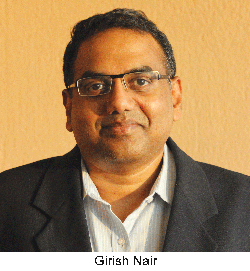 In May 2016, the National Institution for Transforming India (NITI) Aayog, a premier think-tank of the Union government providing “directional and policy inputs”, proposed the establishment of the Atal Innovation Mission to set up 500 ‘tinkering labs’ in schools for classes VI-XII on a pilot basis. This is an excellent proposal which has the potential to transform education by introducing students to hands-on learning enabling deeper understanding of concepts through trial and error and do-it-yourself initiatives.
In May 2016, the National Institution for Transforming India (NITI) Aayog, a premier think-tank of the Union government providing “directional and policy inputs”, proposed the establishment of the Atal Innovation Mission to set up 500 ‘tinkering labs’ in schools for classes VI-XII on a pilot basis. This is an excellent proposal which has the potential to transform education by introducing students to hands-on learning enabling deeper understanding of concepts through trial and error and do-it-yourself initiatives.
Indeed, there’s growing acknowledgement in academia worldwide that true innovation is the outcome of grasping the fundamentals of science, math and technology. That’s why in 2013, former US President Barack Obama launched the Educate to Innovate programme to move American students from the middle to top rungs of global science and mathematics achievement over the next decade. The similar Atal Innovation Mission will spur prime minister Narendra Modi’s Make in India campaign.
Essentially, tinkering labs provide students the opportunity to use tools and equipment, and work with mentors to understand STEM (science, technology, engineering, mathematics) textbook concepts. Inevitably this learning-by-doing combination stimulates creativity.
 If India is to produce innovators, establishment of tinkering labs nationwide is imperative to promote creativity and scientific temper within the student community. For students trapped in classrooms and rote learning from textbooks, tinkering labs offer an enabling environment for developing design, adaptive learning and computational skills. In a nation and society fearful of damaging equipment and gadgetry, tinkering labs which encourage dis-assembly, redesign and reconstruction of equipment, products and machinery to improve them, are overdue. They create conditions wherein failure is celebrated as part of learning in the process of innovation. Persistence and iterating with prototypes until they succeed are encouraged as an essential rite of passage to innovation. In such enabling environments, students are stimulated to address socio-economic and commercial challenges with empathy, insight, ideation and teamwork.
If India is to produce innovators, establishment of tinkering labs nationwide is imperative to promote creativity and scientific temper within the student community. For students trapped in classrooms and rote learning from textbooks, tinkering labs offer an enabling environment for developing design, adaptive learning and computational skills. In a nation and society fearful of damaging equipment and gadgetry, tinkering labs which encourage dis-assembly, redesign and reconstruction of equipment, products and machinery to improve them, are overdue. They create conditions wherein failure is celebrated as part of learning in the process of innovation. Persistence and iterating with prototypes until they succeed are encouraged as an essential rite of passage to innovation. In such enabling environments, students are stimulated to address socio-economic and commercial challenges with empathy, insight, ideation and teamwork.
For example, students of the Cathedral and John Connon School, Mumbai designed and prototyped a sanitary napkin dispenser and profiled the project for other schools/colleges with an invitation to adopt it. In the process, they acquired valuable entrepreneurial, design, manufacturing and marketing experience. Other socially relevant projects such as designing enabling gadgets and services for the physically challenged, and a canteen queues organiser for streamlining food distribution have been designed by students of the S.P. Jain Institute of Management & Research, Mumbai. Similarly, students with access to tinkering labs established in progressive schools, have designed and prototyped revolutionary products for road safety, waste management, transportation and energy conservation which if successfully marketed, could save lives besides hundreds of crores of rupees and transform Indian industry.
Tinkering labs installed in innovation hubs offer the advantage of accessibility to students of under-equipped government and private budget schools as also the public. They should be set up by India Inc and state governments across the country to enable, encourage and invite the country’s 100 million upper primary, high school and higher secondary students to design, prototype and create products and services on a mass scale under the supervision of expert mentors and guides. Only when innovations are attempted on a mass scale can world-beating, globally accepted products and services be made in India. Break-learn-and-remake, learning from failure, design and critical thinking paradigms are mindsets developed in tinkering labs. Several breakthrough technologies like 3D printing, which offers rapid prototyping and the Internet of Things (IoT) which allows automation of almost anything emerged from tinkering labs.
It is also important to note that the world over and especially in developed OECD countries, educationists are becoming increasingly aware of the need to supplement STEM with art and design education. Therefore, the more inclusive acronym STEAM to include art in terms of design and aesthetics as the centre of STEM is the new approach. As propagated by the late legendary Apple Inc founder-CEO Steve Jobs, by investing design skills in all product development processes, revolutionary products and services can be produced.
Tinkering labs need to be instituted in every large school and college/university and for the benefit of children in smaller schools and colleges, publicly accessible innovation hubs should be established as recommended by NITI Aayog. This is the roadmap that needs to be followed to add momentum to the Make in India campaign and transform 21st century India into a manufacturing major.
(Girish Nair and Jehangir Khajotia are co-founders of the Mumbai-based Curiosity Gym Pvt. Ltd)


























